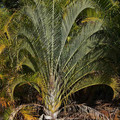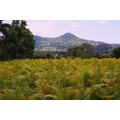Palms achieve their best condition when they are taken care of properly. Likewise, they also appear their best when receive sufficient attention. It is important to learn the fundamentals of palm care to be able to bring out their ultimate capacities. One way to bring out the best in palms is through the use fertilizers. Fertilizers help enhance growth and make it possible for the plants to reach optimal condition.
Nonetheless, it is essential to understand that while fertilizers are generally good for palms they can also be damaging if not applied properly. There are general procedures for applying fertilizer regardless of the plant type. However, it will also do the grower well if they can learn more about fertilization application specific to their species.
Choosing Palm-Friendly Fertilizers
Fertilizers that are intended for palm use usually contain a high concentration of nitrogen including a range of macro- and micronutrients. These nutrients help the palm gain back its health and become more resilient to diseases. Nitrogen deficiency is a very common problem and is characterized by yellowing or a fading colour of the fronds.
Selecting the right fertilizer is important. They should help compensate the deficiency in these plants. Additionally, it is also common for palms to experience magnesium and potassium deficiencies. Make sure to choose a type of granular commercial food for palms featuring a guaranteed analysis of the micronutrients included.
When the plant is contained in a pot use a good potting mix and add slow release fertilizers like Osmocote to small or young palms with a watering of mild seaweed solution. A palm 2 or 3 years old could handle something like Prolific Blue or Nitrophosca, half a handful twice per year for a 45-litre container or 16" pot plus seaweed solution as recommended. These chemicals are cheaper than Osmocote and they have a good chemical analysis for palms of 12% Nitrogen, 5% Phosphorus, 14% Potassium, 6% Sulfur, 1.5% Calcium, 1.2% Magnesium, plus trace elements. Organic fertilizers do not always have trace elements and can sometimes smell and attract animals. But organic fertilizers promote natural development in the soil, such as worm activity and are better for the soil and eventually better for everything that grows in it. Palms like and need fertilizers during their growth period. It probably does not matter using organic or chemical fertilizers for results, they will both do the job and it may come down to political, environmental and economic reasons.
Best Practices of Fertilizer Application
For ground grown palms, make sure you allocate the nutrients extensively throughout the soil area. Also, ensure that the fertilizer is evenly applied throughout the soil or area surrounding the root ball. To do this, pour the fertilizer beginning from the trunk. Measure around one foot from the trunk and then apply the fertilizer while creating a wide ring that reaches out beyond the drip line of the plant's canopy.
Casting the fertilizer far from the trunk will support the balanced distribution of nutrients and the soil will be in better condition. This also supports the outward growth of the root. Also with every feeding the fertilizer should be watered into the soil.
<< Previous Palm Delicacies - What Palm Fruits are Good to Eat | Back to Mullumbimby Palm Blog | Next >> Palm Pests and Applying Proper Extermination Techniques



